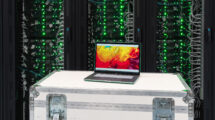Scientific research requires massive amounts of data that needs to be shared among different institutions. Especially in the last two decades, with the advancements in instrumentation and compute power, the amount of data that has been generated is enormous and is putting tremendous stress on the networks. Research and Education Networks (RENs) play a very important role in enabling global collaboration among these institutions. RENs provide highly specialized network services, capacity, and leading capabilities often unmatched by commercial networks. Technology advances such as EVPN, 800GE IP architectures etc. will keep these institutions at the front of the pack.
In this webinar, we will explore use cases and services provided by these high-performance, scalable, and secure IP-optical RENs. We will also discuss the following pertinent technologies:
- EVPN as a common layer 2 and 3 service extending into data center fabric
- A high-density, power-efficient 100 GE/400 GE/800 GE IP architecture for low-latency high-throughput file transfer
- Unified IP-optical layer co-ordination for optimal network management
- Quantum-safe encryption and a Big-data-driven DDoS protection framework to safeguard against evolving cyber attacks
Agenda
REN Considerations
- Goals and Challenges
- Optics – brief overview
- IP
- Sample IP services provided by RENs
- Internet transit
- L2 VPN
- L3 VPN
- Pertinent IP network technologies for RENs
- EVPN for all services – in the context of end-to-end architecture (from WAN to DC)
- Security
- cybersecurity
- Programmable and scalable ACL
- Sample IP services provided by RENs
- 400G/800G coherent routing
- IP/optical co-ordination
- Telemetry/ Open management APIs
- Summary







